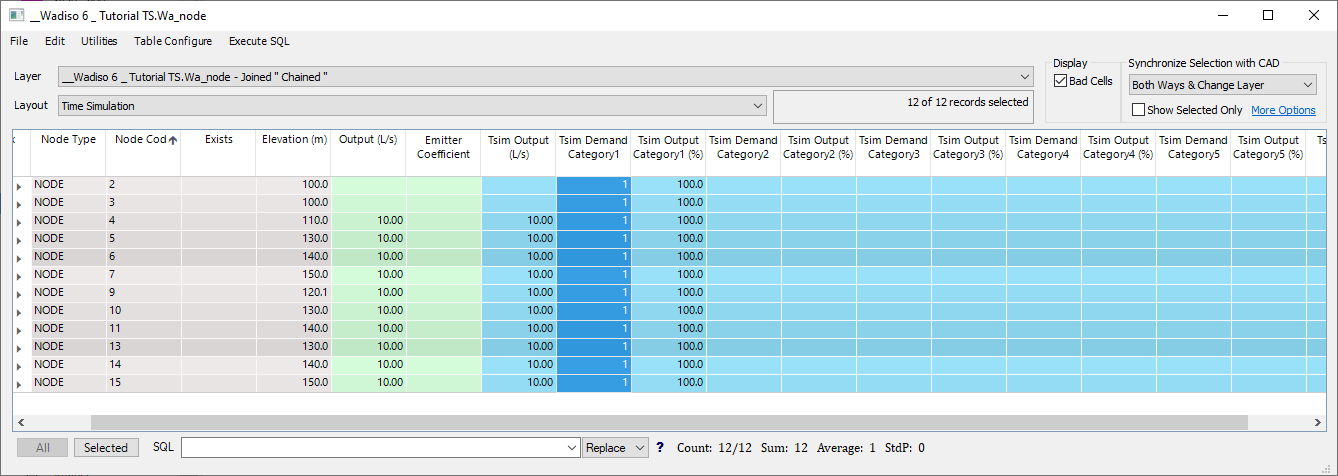The base water demand (output) of every node can be broken down into up to 5 demand categories, and a different time pattern can be assigned to each of the categories. This is achievable through Simulation Data > Simulation Tables > Time Patterns and Simulation Data > Simulation Data in Model Tables > Demand Pattern Allocation (Node).

The Demand Pattern Allocation (Node) sub-menu option gives access to the regular Node table, where other system data, such as output (i.e. the base water demand), can and should have been entered already.
When entering the Node table, the table automatically scrolls to the column “Tsim Demand Category1” (see screen-shot below). There are 5 pairs of columns labelled “Tsim Demand Category1 / Tsim Output Category1” to “Tsim Demand Category 5 / Tsim Output Category5”, to assign a time pattern to each category and define the breakdown of the base demand. The Demand Category columns are used to specify the Time Pattern No’s associated with each category, and the Output Category columns to specify the percentage of the base demand which belongs to the category.

Initially, by default, 100% of the base demand is allocated to Category 1, and 0% to the remaining four categories. Also, all four of the remaining categories have a value of 0 (zero) in the Tsim Demand Category column for all Nodes, meaning that there are no Patterns allocated, except for Category 1, where Pattern No 1 is assign to all nodes. The user has to enter/edit the appropriate time pattern No’s and percentages. Normally, the 5 Output Category percentages specified should add up to 100%. This is however not a requirement.
Since the above table is the same as the Node table, it has the same common, built-in functionality, such as e.g. find/replace, filters, sorting, exporting, etc.
The Time Pattern No and Demand Output % assignments are considered system-specific data, which is saved as part of the system data. It is not saved as part of the time/WQ simulation-specific data.
Furthermore, the properties are associated with each node in the system data. Therefore, these properties can also be edited directly in the Node table, or in the Node Info box (also referred to as the Database box) available in Albion environment, or by the selective editing features available in Albion environment.